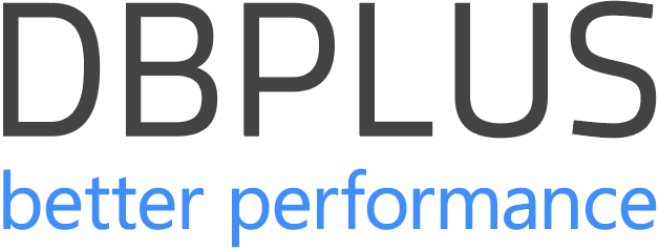Distributed databases—by storing data across a whole set of physical locations— allow organizations to manage data across multiple geographical locations with the semblance of a single unified system. What can companies gain with this choice?
Distributed Query Processing
Efficiency in distributed databases hinges on the efficiency of the processing of queries across multiple locations. Distributed query processing tackles this by breaking down complex queries into simpler, executable operations close to the data’s physical location. The result is: minimized data movement across the network and better query performance.
Distributed Transaction Management
Integrity and consistency are the linchpins of transaction management in distributed environments. This feature ensures that all transactional processes are reliable and consistent, regardless of the number of sites involved. Let’s take commit protocols as an example. They help guarantee that transactions are not finalized until all involved sites have successfully completed their parts. That’s how they preserve data integrity across the network.
Integration
One of the hallmarks of effective distributed databases is their ability to operate invisibly. To users, these databases appear as a single, cohesive entity despite their physically distributed nature. This illusion is maintained through sophisticated distributed database management systems (DDBMS). These conduct operations across various locations, ensuring data consistency and up-to-dateness without exposing the complexities of the underlying distribution.
Network Linking
The glue that holds the distributed database together is its network linking—a critical infrastructure that connects disparate database components. This setup utilizes advanced communication protocols to ensure that data and transactions are seamlessly and reliably shared across sites. Essential for maintaining the database’s integrity and performance, network linking is pivotal in optimizing operations and ensuring smooth data synchronization.
Types of Distributed Databases
The structure of distributed databases varies. This flexibility means being able to meet different operational demands.
Homogeneous Distributed Databases
In a homogeneous distributed database, all sites involved use the same hardware and software, and adhere to consistent operational protocols. This uniformity means that database management systems and data structures are consistent across all nodes, simplifying both integration and management. Such consistency allows for straightforward implementation of data processes and seamless query execution across multiple locations.
The predictability of homogeneous systems reduces complications in application development and database administration. What follows is a lower cost of training and maintenance. The ultimate result? These systems are a perfect help in expanding the data infrastructure smoothly—with no extra complexity added in the process.
Heterogeneous Distributed Databases
Heterogeneous distributed databases are a patchwork of different systems. They may use varying DBMS software, operating systems, and even data models, such as relational or NoSQL. This diversity calls for the use of middleware or specialized software. Otherwise, there is no ensuring of smooth communication across the system, or translating data and requests between disparate DBMSs to maintain a unified user experience.
The complexity of managing these diverse systems is offset by their flexibility. Heterogeneous databases allow for the integration of legacy systems and can be customized to meet local needs at individual sites, optimizing both performance and resource use. This adaptability makes them well-suited for organizations where different departments or business units may have developed their IT systems independently but need to function cohesively.
While challenging to manage, heterogeneous systems offer a powerful solution for integrating varied information systems into a unified operational framework. They are particularly valuable in environments that require detailed customization or need to incorporate a variety of existing systems without undergoing full-scale infrastructure overhauls.
Distributed Database Storage Methods
To manage data effectively across multiple locations, distributed databases take advantage of a combination of storage methods. These include replication and fragmentation, each with a distinct purposes and specific advantages.
Replication
Replication involves creating and maintaining exact copies of data on multiple database servers that may reside in different geographic locations. This method is designed to bolster data availability and enhance the fault tolerance of the distributed system. Through replication, databases ensure continuity of operation, even if a segment of the system fails or encounters issues such as network disruptions or hardware malfunctions.
Replication can be implemented synchronously, with transactions needing to complete on all replicas before being acknowledged as successful. The alternative—asynchronous, replication allows transactions to be copied to other locations at predetermined intervals.
While synchronous replication maintains real-time consistency across data copies, leading to higher data integrity, it can slow down transaction processing due to increased latency. Asynchronous replication, on the other hand, may introduce minor discrepancies between data copies but typically offers better performance and is suited for systems spread across wide geographical areas.
Fragmentation
Fragmentation, unlike replication, focuses on how data is structured and stored across different sites to optimize the efficiency of data retrieval and reduce redundant data transfer across the network. By partitioning data into distinct segments and distributing these across various locations, fragmentation aims to speed up query responses and decrease network load.
The two main types of fragmentation used in distributed databases are:
- Horizontal Fragmentation: This technique divides a database table by rows, where each segment or fragment contains rows that meet certain specific criteria. Horizontal fragmentation is advantageous for scenarios where queries frequently target specific subsets of data, as it allows for quicker access by isolating relevant rows.
- Vertical Fragmentation: Conversely, vertical fragmentation divides a table into columns. Each segment includes columns that are commonly accessed together in queries, with a key column included in every fragment to facilitate the reconstruction of the original table if necessary. This method is particularly useful for improving query performance whenever we need only certain columns, reducing the volume of data that we need to process and transfer.
Advantages of Distributed Databases
Distributed databases have become the linchpins of large-scale, modern applications, serving a global user base from startups scribbling on napkins to enterprises managing continents of data. By distributing data across multiple nodes, these databases offer significant advantages over traditional centralized databases, particularly in terms of scalability, reliability, and performance—all while keeping your CFO happy with the cost savings.
Scalability
One of the primary features of distributed databases is their ability to scale horizontally. This means that instead of scaling up by acquiring more powerful and expensive hardware (vertical scaling), you can add more servers or nodes to the network as easily as adding pancakes to your breakfast stack.
Horizontal scaling makes it easier to accommodate growth in data volume and user load by distributing the workload evenly across multiple nodes, thus maintaining performance without a significant increase in cost.
Reliability and Availability
If the fate of your entire online business hinged on a single light bulb. If that bulb goes out, so does your business. Distributed databases prevent this scenario by replicating data across multiple nodes. This way, if one node goes down, your database doesn’t go down with it. It’s a backup, ensuring that your e-commerce or financial services keep running, and your customers remain oblivious to any potential disasters in the backend.
Improved Performance
The distribution of data across multiple servers allows distributed databases to handle more queries in parallel—meaning better throughput and reduced latency. How? Distributed databases enhance performance by managing queries across multiple servers, which allows them to process more information simultaneously. Load balancing distributes the queries, preventing any single node from becoming overwhelmed and maintaining efficient throughput and low latency.
Cost-Effectiveness
Rather than depending on high-end, costly hardware, distributed databases utilize clusters of more economical machines that together deliver on performance. This approach not only reduces the initial capital expenditure but also spreads out maintenance costs and lessens the impact of potential hardware failures. The scalability of adding nodes as needed helps organizations align their operational expenses with their actual growth, ensuring a cost-effective solution for expanding data needs.
Disadvantages of Distributed Databases
Despite the advantages, distributed databases also come with a set of challenges that can complicate their deployment and ongoing management. These challenges stem from the inherent complexity of distributed systems, the difficulties in maintaining data integrity and security, and the increased demands placed on database administration.
Complexity
The architecture of distributed databases is a network of interconnected nodes, each one a potential party pooper if something goes wrong. Each node in a distributed system potentially introduces new points of failure and increases the overall complexity of the network. Troubleshooting becomes a treasure hunt, where X marks the spot across diverse geographic locations. And just to spice things up, synchronizing data across all these nodes is what makes sure the IT team has no chance of getting bored.
Data Integrity and Security Issues
Maintaining data integrity in a distributed database is significantly more challenging than in a centralized database. The distributed nature of the database means that data is replicated across different nodes. This can lead to inconsistencies if updates are not properly synchronized. Ensuring that all nodes reflect the most recent data updates, especially in the presence of network failures or delays, requires robust concurrency control mechanisms and sophisticated synchronization protocols.
And security? It is another critical concern in distributed databases—every node is like an open door. The data distributed across multiple sites must be protected against unauthorized access and breaches. Each node increases the attack surface of the database, making comprehensive security measures essential. Securing a distributed database involves implementing encryption practices, securing network communications, and ensuring that all nodes comply with security policies.
Administrative Challenges
Managing a distributed database requires a higher level of skill and more sophisticated tools compared to managing a centralized database. It’s more of an “assemble-it-yourself” furniture kit with instructions in hieroglyphics. Database administrators must be equipped with the right set of skills. Without them, they wouldn’t be able to handle the complexities of multiple nodes, including configuration, performance tuning, and failure recovery. The need for specialized knowledge and tools comes with the cost of training and operations.
What adds to the administrative burden is the need for more advanced software tools designed to manage distributed data effectively. These tools are often more complex and costly than those used for centralized databases, adding to the overall maintenance expanses.



